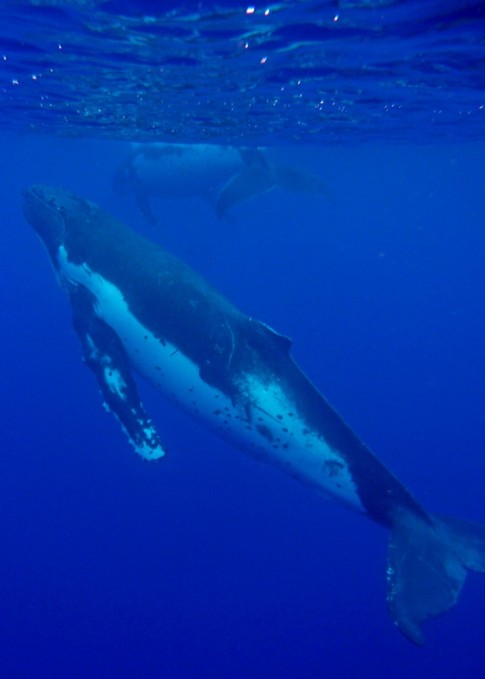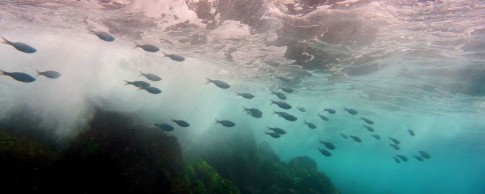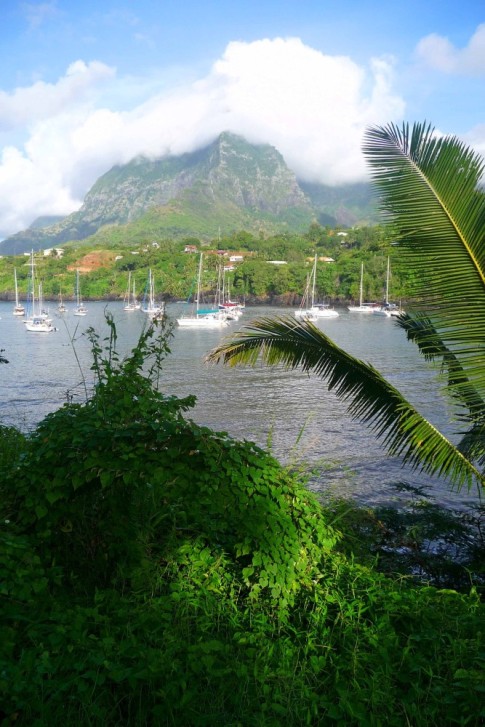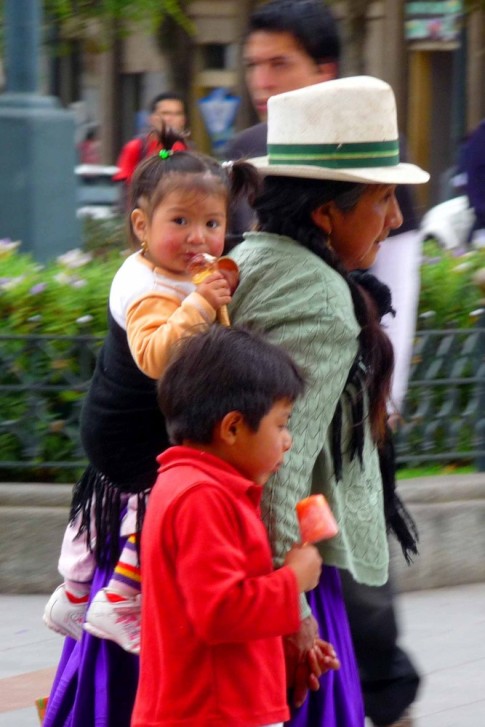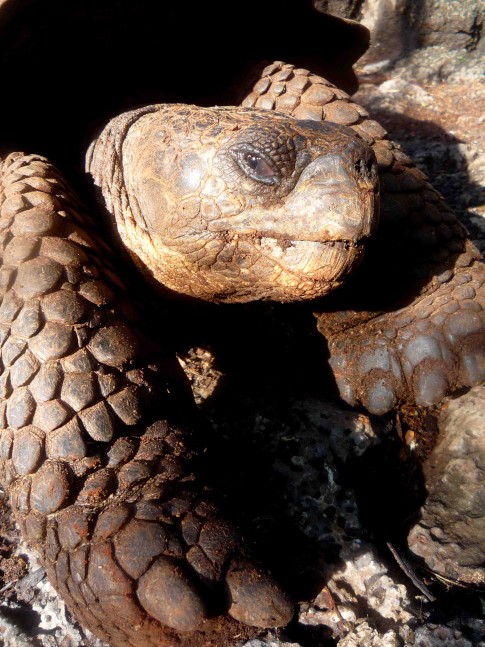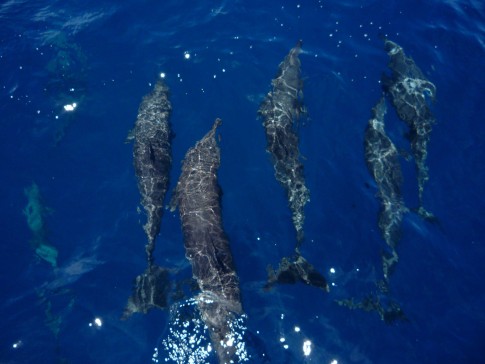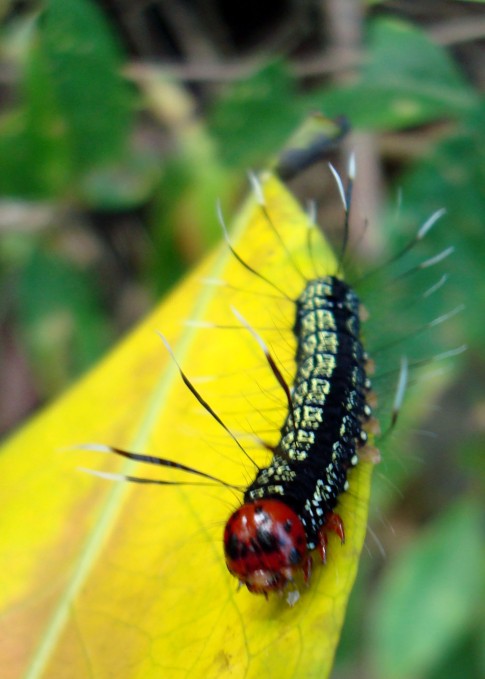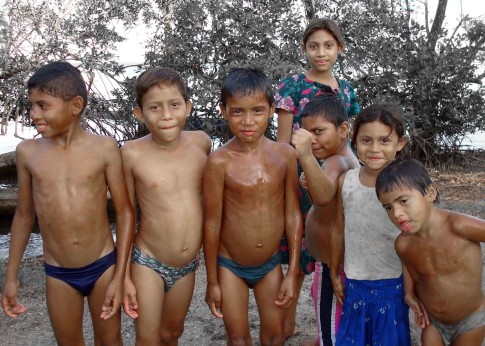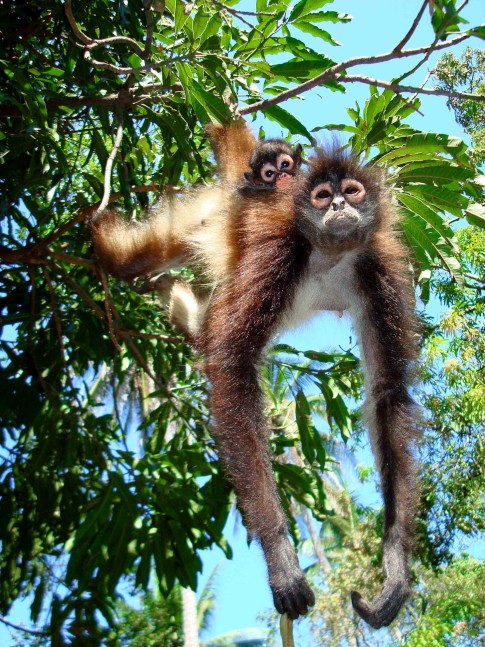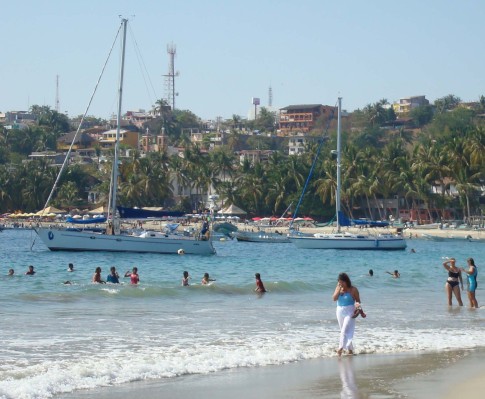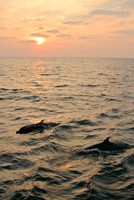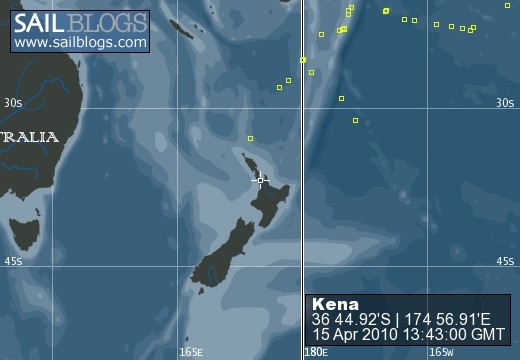
Kena
22 November 2009 | Tutukaka
11 November 2009
10 November 2009
09 November 2009
07 November 2009
07 November 2009
04 November 2009
03 November 2009
01 October 2009
29 September 2009
05 September 2009 | Nuku'alofa
27 August 2009
27 August 2009
23 August 2009
16 August 2009
14 August 2009
12 August 2009
09 August 2009
08 August 2009
08 August 2009
Exploring Hiva Oa
28 April 2009 | Hiva Oa
Roger
Atuona is the largest town on Hiva Oa, with most of the island's population of around 2,000. We're anchored in baie Tahauku, which is next to the more open bay in front of Atuona. It's a four kilometer walk around Tahauku, over the point and down to Atuona. The road is lined with hundreds of mango , pistache, and papaya trees---these are just the ones we recognize. We've collected many of the mangoes on our several walks back and forth. The massive bulk of an ancient volcanic core towers more than 4,000 feet directly over Atuona and the anchorage. Most of the time, the peak is shrouded in cloud, but yesterday we were fortunate to see the entire massive peak --- it's spectacular, with sheer cliffs, and where it is not vertical, completely covered in dense green vegetation. The entire island is very green---very much in the mould of King Kong.
The town, the streets, and the people are very clean and tidy. There is absolutely no trash visible anywhere, and the roadside is trimmed regularly. The roads are well paved, mostly concrete. All of this is in sharp contrast to what we've become accustomed to in latin America. The French government subsidizes the islands heavily. Almost all of the vehicles are very new, with the most popular by far being the Toyota HiLux four door four-wheel-drive pickup, followed by the Land Rover Defender, then an assortment of Korean cars. The gardens around the homes are filled with fruit trees and flowers and are well tended. The most common flower is the hibiscus, in every color and size imaginable. The lobiscus are the flowers when they've fallen to the ground. The local women all wear flowers in their hair.
Bantam chickens are running everywhere. There's a continuous background noise of the roosters crowing. Even in the most remote parts of the island, you see them by the side of the road. They're very colorful birds, with tremendous variety.
In the mornings, we wake to the sound of grunting and splashing as the locals rush by in outrigger canoes. It seems there are several teams, and each canoe holds around eight. Sometimes several of them are racing. At other times, we see individual outrigger canoes zipping about the anchorage. Of course, they're all of very modern fiberglass construction.
There are about 20 boats in the anchorage at any time, with boats arriving and leaving throughout the day. Yesterday, a boat named Monkey Feet, a "kid boat" (a boat with several children aboard) came in and anchored next to us. Soon we learned they had broken their forestay on the passage. Luckily, they had enough wire to replace it --- we contributed the use of our 110 volt angle grinder to the project. There are boats from the US, Canada, Norway, Sweden, France, the Netherlands, Australia, New Zealand and, surprisingly, one from Japan. Lauren Grace, Kachina, and several others left today for other islands, three other new boats arrived. This morning, a catamaran named Honeymoon left the anchorage and as they passed us, they called out to Sal to tell her that they have been following our blog and love it, and that they also have one on Sailblogs.
Paul Gaugin moved here after becoming frustrated with his life in Tahiti. He painted a little, but then was unable to, and involved himself in politics, aligning himself with the locals against the French colonial functionaries. He died here. We visited the Paul Gaugin center that contains reproductions of a great deal of his works. They were painted by a couple of artists commissioned for the project, and the colors are certified to be correct. They're wonderful paintings, with rich colors. There are copies of many of his letters, ones he wrote, and ones written to him by people like Vincent Van Gogh. The center is not in any way touristy, with nothing on sale---it seems the locals are very honored that he chose to be here, and the center is a celebration of that fact. There's also a Jacques Brel (a famous French singer who also lived here on Hiva Oa) center, featuring his private airplane.
The prices of just about everything are wildly more than we've been used to in Latin America --- beers in the supermarket are around four dollars each. On our first trip into town, we ate at Snack Take Take, one of about two restaurants in town. We ordered two meals, a side of green beans and three beers for lunch. The bill was more than 80 dollars. The currency here is the French Polynesia Franc, not, as we anticipated, the Euro. There are about 85 of these to the US dollar. Anything and everything seems to be in the thousands of PFCs.
When you arrive in French Polynesia, you're required to post a bond which amounts to at least the price of an airfare to your home, for each person on board. We signed up for the Latitude 38 magazine sponsored Pacific Puddle Jump in order to receive a waiver of the bond requirement, but were too late. Fuel costs nearly 15 dollars a gallon unless you have a fuel tax waiver. Australians receive a 90 day visa automatically, but most others, including New Zealanders and Americans, are only given 30 days and must apply for an extension. With all of this, and our need to import the autopilot drive and other parts, we decided to use an agent to handle our paperwork. It now seems as though we would have been able to handle it all ourselves at considerably less cost. Oh well! The local representative, Sandra, also provides a laundry service which we also used for our biggest items. The price of this, too, made our heads spin.
The prices are very high, but given the remoteness and the standard of living here, it seems unavoidable. We're very happy to be here, the people are very friendly, and the whole atmosphere and scenery are fantastic, so the prices are not a big issue for us.
Galivant arrived on Thursday, the day after us. On Saturday, we rented a car (a Toyota HiLux 4 door, of course!) with Bruce and Marianne of said Galivant, and drove over the entire island. We started by heading directly to the most distant point, the village and bay of Puamau. The roads were excellent, with paving and concrete whenever it became really steep, which was often. We climbed thousands of feet to the central backbone of the island, were treated to spectacular views of Hiva Oa, Tahuata, and Motutane, then followed this north and east, finally descending an amazing series of switchbacks, and for about 10 miles, inched our way around the cliffs over the sea. At Puamau we visited an ancient archeological site that featured a number of huge stone tikis. My concept of a tiki, from growing up in New Zealand, was a wood, bone, or greenstone carving that you hang around your neck. Here, the tiki is large stone carving, often several times the height of an adult. We were the only people at the site and after about 15 minutes, the lady in charge of the place turned up to request our 300pfc each for the visit. On hearing that we lived in the US, she exclaimed excitedly about the election of Barack Obama, turned up her nose at the mention of Nicolas Sarkozy, and the proceeded to wield a huge pole to knock down some pamplemousse for us. These are the huge grapefruit that grow here, and we found them delicious.
On the way back along the island spine, we took a detour marked by a sign offering banana products by a fellow with the last name of Connor. He turned out to be quite an ancient white fellow, spoke only French, and had a first name something like Fau'vau. We had fresh bananas, whole dried bananas, and sampled his banana vinegar. We left with a bunch of fresh bananas, about 8 dried banana leaf-wrapped packages of dried bananas, and a bottle of banana vinegar. Our next turn was from the spine of the island towards a bay on the north side of the island. Here, in the bay, we watched as the locals took a huge conger eel that had been roasting on a fire, dipped it in the sea, and began to deal with it. On the cliffs around the bay, we saw numerous goats. They are wild, and along with the bantams, pigs, and some wild cattle, seem to make up most of the animal population. On the way out of the village, we stopped at a house displaying an ARTISANAT sign. It turned out to be the house of a Belgian woman, and she was offering painted cloth pictures done by her husband, and gourd lamps of her own design and construction. They were all excellent, but also very expensive. While we were looking over the offerings, there was a sudden shaking of the power line to the house. Moments later, a local fellow came rushing to the door in a torrent of excited French. It turned out a huge tree had fallen across the road about 100 yards away, bringing down the high tension lines. We all walked up to see it, and sure enough the tree completely blocked our way back, and there were live high voltage wires on the road.
Nadine, the Belgian lady, immediately called the authorities in Atuona. It turns out that the power lines supplied Atuona from a turbine near the village we had just visited. Atuona was without power, and until Nadine called, they had no idea what had happened. They promised to dispatch a crew immediately, and arranged to have the turbines shut down to make clearing the wreckage possible. They were all very nervous about the downed lines, because in a previous similar incident, a boy was killed when he walked near a downed wire.
Nadine invited us back for coffee while we waited for the road to be cleared, and so we learned her story. She and her husband Jean had moved to the island from Belgium 30 years ago. They first settled in the next bay around at the site of an abandoned village. They were the only people in the bay and valley. Cars were unavailable on the island, so they had to walk 5 hours to Atuona for basics. They lived on fish and the fruit from the trees at the site of the old village, built a house, and raised three boys. One of the boys is at college in France, and the other two are in Tahiti. They miss the island and two intend to return. Nadine and Jean moved the two miles to the village with the road so their children could receive schooling. We asked her many questions about their life on the island, and about how things worked. It turns out that in the village, the only people with jobs are the lone policeman, the two teachers, and the engineer who cleans out the waterways for the turbines. Everyone else earns money from copra, the dried meat of the coconut. They fish, gather fruit, and hunt wild pigs. In fact, Nadine told us that the fellow who came rushing to the door to ask Nadine to call Atuona about the tree, had been pig hunting at the time. Pigs are hunted with dogs and knives---guns are not usually used. We had noticed that one tourist activity offered was to hunt wild pigs. On our drive back, we passed a man with a machete and a pack of five dogs --- he'd clearly been hunting pigs. The French government pays the teachers and gendarmes twice the salary they would receive in France. Today, we hitched a ride with a teacher who has been here two years, and has two years to go. He told us he enjoyed it here, but that it was often quite boring. He hikes and fishes, but the high salary also allows him to take trips and he's visited Australia, New Zealand and Japan in the two years he's been here. The government does not provide money for living to the locals, although it does provide subsidies for housing---you can buy a standardized government house for 3,000 dollars if you have no income. We asked about the very new and expensive vehicles that all the locals seem to be driving, and she explained that in this culture, appearances are everything. People spend all of their money on vehicles and on making their gardens look wonderful, but inside the houses there is usually only a single couch and no other furniture.
After returning to Atuona, we continued on to the west looking for another ancient site. On the way, we ended up at a beach that was crowded with the locals. They were playing volleyball and in a large grassy area, women were playing bingo. The beach was directly impacted by the trade winds, with big rolling surf crashing onto the black rocks, and with thousands of coconuts rolling up and down the beach with every wave. We decided to stay a while and watch the action. As dusk approached, we made our way up a narrow road into the jungle at the base of the huge peak, finding the extensive black volcanic ruins amongst huge trees.
Sunday was spent working on boat projects. A big part of my day was taken in disassembling the head and replacing the diaphragm, valves, and seals. The buildup of hard water and turd scale was massive. We're all hoping the days of spouts up the bum are past.
Today, Monday, we did some final provisioning, received our paperwork from Sandra the agent, and set about getting ready to depart tomorrow. We've decided we'll sail first to the island of Tahuata, which is very close. The harbor we're in here is fed by a river, and the water is opaque, so we're looking forward to being able to swim.
We're amazed at how civilized things seem to be here. These islands are very remote and isolated, with almost no tourism. The visiting yachties seem to be almost all of the visitors---apart from the locals, they're the only other people we see on the streets and in the stores.
The town, the streets, and the people are very clean and tidy. There is absolutely no trash visible anywhere, and the roadside is trimmed regularly. The roads are well paved, mostly concrete. All of this is in sharp contrast to what we've become accustomed to in latin America. The French government subsidizes the islands heavily. Almost all of the vehicles are very new, with the most popular by far being the Toyota HiLux four door four-wheel-drive pickup, followed by the Land Rover Defender, then an assortment of Korean cars. The gardens around the homes are filled with fruit trees and flowers and are well tended. The most common flower is the hibiscus, in every color and size imaginable. The lobiscus are the flowers when they've fallen to the ground. The local women all wear flowers in their hair.
Bantam chickens are running everywhere. There's a continuous background noise of the roosters crowing. Even in the most remote parts of the island, you see them by the side of the road. They're very colorful birds, with tremendous variety.
In the mornings, we wake to the sound of grunting and splashing as the locals rush by in outrigger canoes. It seems there are several teams, and each canoe holds around eight. Sometimes several of them are racing. At other times, we see individual outrigger canoes zipping about the anchorage. Of course, they're all of very modern fiberglass construction.
There are about 20 boats in the anchorage at any time, with boats arriving and leaving throughout the day. Yesterday, a boat named Monkey Feet, a "kid boat" (a boat with several children aboard) came in and anchored next to us. Soon we learned they had broken their forestay on the passage. Luckily, they had enough wire to replace it --- we contributed the use of our 110 volt angle grinder to the project. There are boats from the US, Canada, Norway, Sweden, France, the Netherlands, Australia, New Zealand and, surprisingly, one from Japan. Lauren Grace, Kachina, and several others left today for other islands, three other new boats arrived. This morning, a catamaran named Honeymoon left the anchorage and as they passed us, they called out to Sal to tell her that they have been following our blog and love it, and that they also have one on Sailblogs.
Paul Gaugin moved here after becoming frustrated with his life in Tahiti. He painted a little, but then was unable to, and involved himself in politics, aligning himself with the locals against the French colonial functionaries. He died here. We visited the Paul Gaugin center that contains reproductions of a great deal of his works. They were painted by a couple of artists commissioned for the project, and the colors are certified to be correct. They're wonderful paintings, with rich colors. There are copies of many of his letters, ones he wrote, and ones written to him by people like Vincent Van Gogh. The center is not in any way touristy, with nothing on sale---it seems the locals are very honored that he chose to be here, and the center is a celebration of that fact. There's also a Jacques Brel (a famous French singer who also lived here on Hiva Oa) center, featuring his private airplane.
The prices of just about everything are wildly more than we've been used to in Latin America --- beers in the supermarket are around four dollars each. On our first trip into town, we ate at Snack Take Take, one of about two restaurants in town. We ordered two meals, a side of green beans and three beers for lunch. The bill was more than 80 dollars. The currency here is the French Polynesia Franc, not, as we anticipated, the Euro. There are about 85 of these to the US dollar. Anything and everything seems to be in the thousands of PFCs.
When you arrive in French Polynesia, you're required to post a bond which amounts to at least the price of an airfare to your home, for each person on board. We signed up for the Latitude 38 magazine sponsored Pacific Puddle Jump in order to receive a waiver of the bond requirement, but were too late. Fuel costs nearly 15 dollars a gallon unless you have a fuel tax waiver. Australians receive a 90 day visa automatically, but most others, including New Zealanders and Americans, are only given 30 days and must apply for an extension. With all of this, and our need to import the autopilot drive and other parts, we decided to use an agent to handle our paperwork. It now seems as though we would have been able to handle it all ourselves at considerably less cost. Oh well! The local representative, Sandra, also provides a laundry service which we also used for our biggest items. The price of this, too, made our heads spin.
The prices are very high, but given the remoteness and the standard of living here, it seems unavoidable. We're very happy to be here, the people are very friendly, and the whole atmosphere and scenery are fantastic, so the prices are not a big issue for us.
Galivant arrived on Thursday, the day after us. On Saturday, we rented a car (a Toyota HiLux 4 door, of course!) with Bruce and Marianne of said Galivant, and drove over the entire island. We started by heading directly to the most distant point, the village and bay of Puamau. The roads were excellent, with paving and concrete whenever it became really steep, which was often. We climbed thousands of feet to the central backbone of the island, were treated to spectacular views of Hiva Oa, Tahuata, and Motutane, then followed this north and east, finally descending an amazing series of switchbacks, and for about 10 miles, inched our way around the cliffs over the sea. At Puamau we visited an ancient archeological site that featured a number of huge stone tikis. My concept of a tiki, from growing up in New Zealand, was a wood, bone, or greenstone carving that you hang around your neck. Here, the tiki is large stone carving, often several times the height of an adult. We were the only people at the site and after about 15 minutes, the lady in charge of the place turned up to request our 300pfc each for the visit. On hearing that we lived in the US, she exclaimed excitedly about the election of Barack Obama, turned up her nose at the mention of Nicolas Sarkozy, and the proceeded to wield a huge pole to knock down some pamplemousse for us. These are the huge grapefruit that grow here, and we found them delicious.
On the way back along the island spine, we took a detour marked by a sign offering banana products by a fellow with the last name of Connor. He turned out to be quite an ancient white fellow, spoke only French, and had a first name something like Fau'vau. We had fresh bananas, whole dried bananas, and sampled his banana vinegar. We left with a bunch of fresh bananas, about 8 dried banana leaf-wrapped packages of dried bananas, and a bottle of banana vinegar. Our next turn was from the spine of the island towards a bay on the north side of the island. Here, in the bay, we watched as the locals took a huge conger eel that had been roasting on a fire, dipped it in the sea, and began to deal with it. On the cliffs around the bay, we saw numerous goats. They are wild, and along with the bantams, pigs, and some wild cattle, seem to make up most of the animal population. On the way out of the village, we stopped at a house displaying an ARTISANAT sign. It turned out to be the house of a Belgian woman, and she was offering painted cloth pictures done by her husband, and gourd lamps of her own design and construction. They were all excellent, but also very expensive. While we were looking over the offerings, there was a sudden shaking of the power line to the house. Moments later, a local fellow came rushing to the door in a torrent of excited French. It turned out a huge tree had fallen across the road about 100 yards away, bringing down the high tension lines. We all walked up to see it, and sure enough the tree completely blocked our way back, and there were live high voltage wires on the road.
Nadine, the Belgian lady, immediately called the authorities in Atuona. It turns out that the power lines supplied Atuona from a turbine near the village we had just visited. Atuona was without power, and until Nadine called, they had no idea what had happened. They promised to dispatch a crew immediately, and arranged to have the turbines shut down to make clearing the wreckage possible. They were all very nervous about the downed lines, because in a previous similar incident, a boy was killed when he walked near a downed wire.
Nadine invited us back for coffee while we waited for the road to be cleared, and so we learned her story. She and her husband Jean had moved to the island from Belgium 30 years ago. They first settled in the next bay around at the site of an abandoned village. They were the only people in the bay and valley. Cars were unavailable on the island, so they had to walk 5 hours to Atuona for basics. They lived on fish and the fruit from the trees at the site of the old village, built a house, and raised three boys. One of the boys is at college in France, and the other two are in Tahiti. They miss the island and two intend to return. Nadine and Jean moved the two miles to the village with the road so their children could receive schooling. We asked her many questions about their life on the island, and about how things worked. It turns out that in the village, the only people with jobs are the lone policeman, the two teachers, and the engineer who cleans out the waterways for the turbines. Everyone else earns money from copra, the dried meat of the coconut. They fish, gather fruit, and hunt wild pigs. In fact, Nadine told us that the fellow who came rushing to the door to ask Nadine to call Atuona about the tree, had been pig hunting at the time. Pigs are hunted with dogs and knives---guns are not usually used. We had noticed that one tourist activity offered was to hunt wild pigs. On our drive back, we passed a man with a machete and a pack of five dogs --- he'd clearly been hunting pigs. The French government pays the teachers and gendarmes twice the salary they would receive in France. Today, we hitched a ride with a teacher who has been here two years, and has two years to go. He told us he enjoyed it here, but that it was often quite boring. He hikes and fishes, but the high salary also allows him to take trips and he's visited Australia, New Zealand and Japan in the two years he's been here. The government does not provide money for living to the locals, although it does provide subsidies for housing---you can buy a standardized government house for 3,000 dollars if you have no income. We asked about the very new and expensive vehicles that all the locals seem to be driving, and she explained that in this culture, appearances are everything. People spend all of their money on vehicles and on making their gardens look wonderful, but inside the houses there is usually only a single couch and no other furniture.
After returning to Atuona, we continued on to the west looking for another ancient site. On the way, we ended up at a beach that was crowded with the locals. They were playing volleyball and in a large grassy area, women were playing bingo. The beach was directly impacted by the trade winds, with big rolling surf crashing onto the black rocks, and with thousands of coconuts rolling up and down the beach with every wave. We decided to stay a while and watch the action. As dusk approached, we made our way up a narrow road into the jungle at the base of the huge peak, finding the extensive black volcanic ruins amongst huge trees.
Sunday was spent working on boat projects. A big part of my day was taken in disassembling the head and replacing the diaphragm, valves, and seals. The buildup of hard water and turd scale was massive. We're all hoping the days of spouts up the bum are past.
Today, Monday, we did some final provisioning, received our paperwork from Sandra the agent, and set about getting ready to depart tomorrow. We've decided we'll sail first to the island of Tahuata, which is very close. The harbor we're in here is fed by a river, and the water is opaque, so we're looking forward to being able to swim.
We're amazed at how civilized things seem to be here. These islands are very remote and isolated, with almost no tourism. The visiting yachties seem to be almost all of the visitors---apart from the locals, they're the only other people we see on the streets and in the stores.
Comments
| Vessel Name: | Kena |
| Vessel Make/Model: | Ganley Pacemaker 40 |
| Hailing Port: | Tutukaka, New Zealand |
| Crew: | Roger, Sally, Tane, Hunters all |
| About: | The Hunter family: Roger, originally from Tutukaka, New Zealand Sally, from Tasmania, Australia and Tane is from New Mexico. |
| Extra: | This leg of the trip is from Puerto Lucia, Ecuador to New Zealand. |
Kena's Photos - Main
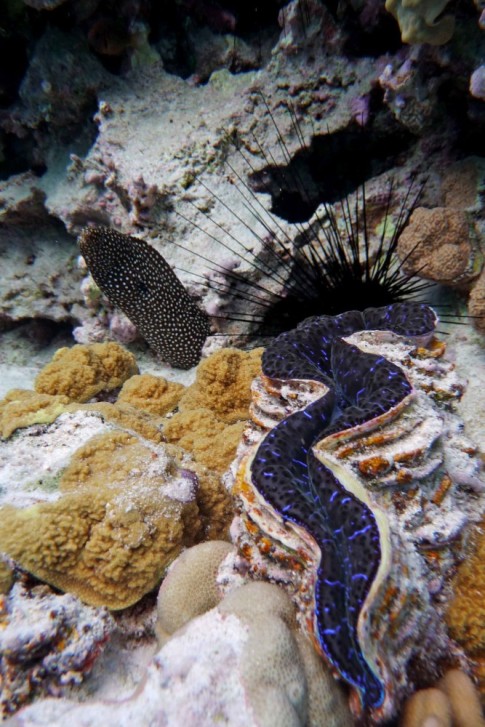 |
A few picks of Roratonga, where we picked up Tomas, and of the incredible Beveridge Reef
20 Photos
Created 1 September 2009
|
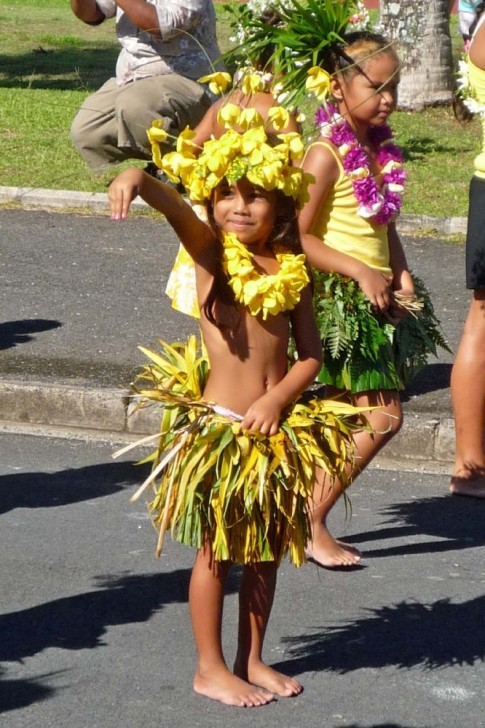 |
Our adventure in the islands of Tahaa and Raiatea in The Society Islands
18 Photos
Created 5 August 2009
|
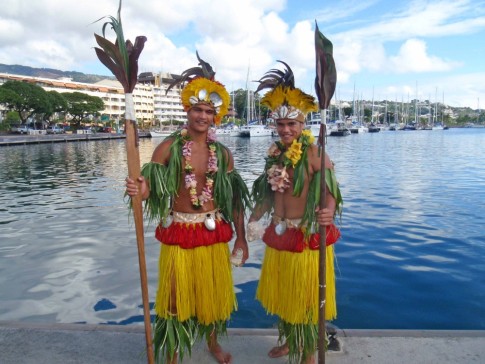 |
The Sailing Rendezvous in Tahiti and Moorea, plus a little of Huahine
35 Photos
Created 5 August 2009
|
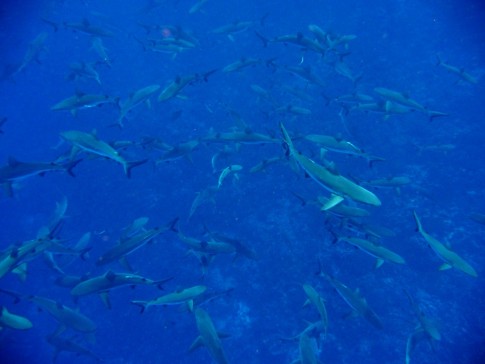 |
Our journey through the coral atolls of the Tuamotus in French Polynesia
65 Photos
Created 19 June 2009
|
S/V Kena
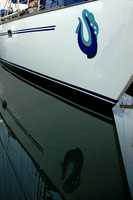
Who: Roger, Sally, Tane, Hunters all
Port: Tutukaka, New Zealand
